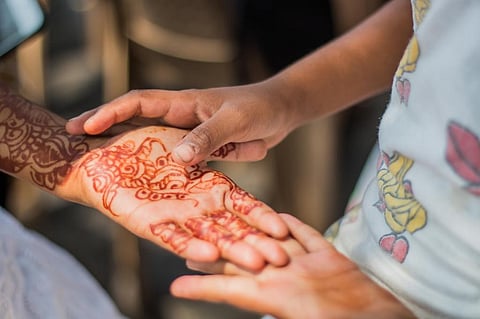

Some 49.6 million people are trapped in modern slavery on any given day. They are either forced to work against their will or are in a marriage that they have been forced into, according to the 2021 Global Estimates of Modern Slavery released September 12, 2022.
Forced labour accounted for 27.6 million of those in modern slavery and forced marriage for 22 million. The new estimates showed that forced labour and forced marriage had increased significantly in the last five years.
Read
The report by the International Labour Organization (ILO), Walk Free and the International Organization for Migration found that 10 million more people were trapped in modern slavery in 2021, compared to 2016 global estimates. Women and children were especially vulnerable.
The Asia-Pacific region had the highest number of people in modern slavery and the Arab states the highest prevalence. But no region, developed or developing, was free from the practice.
The COVID-19 pandemic had increased the risk of modern slavery and made the target of ending it among children by 2025 and universally by 2030 even more difficult.
Forced labour and marriage
Modern slavery comprises two principal components — forced labour and forced marriage.
The ILO Forced Labour Convention, 1930 describes forced labour as “all work or service which is exacted from any person under the menace of any penalty and for which the said person has not offered himself voluntarily.”
Of the 27.6 million people in situations of forced labour on any given day, 11.8 million are women and girls while 3.3 million are children.
Asia and the Pacific host 15.1 million people in forced labour, followed by Europe and Central Asia with 4.1 million; Africa with 3.8 million; the Americas with 3.6 million and the Arab states with 0.9 million.
The 2021 Global Estimates of Modern Slavery showed that 86 per cent of all forced labour was imposed by private agents — 63 per cent in forced labour exploitation and 23 per cent in forced commercial sexual exploitation. State-imposed forced labour accounted for the remaining 14 per cent.
Migrant workers, who are not protected by law and are unable to exercise their rights, face a higher risk of forced labour than other workers.
Forced marriage refers to situations where a person has been forced to marry without their consent. Child marriage is also considered a form of forced marriage. Between 2016 and 2021, there was a 6.6 million increase in the number of people living in a forced marriage.
The increase in forced marriage can be partially explained by compounding crises — COVID-19 pandemic, conflicts and climate change.
These crises have led to unprecedented increases in extreme poverty, lower education rates, a rise in distress migration and significant increases in reports of gender-based violence. These factors are associated with increased vulnerability to forced marriage.
Nearly two-thirds of all forced marriages (14.2 million) are in Asia and the Pacific. This number is followed by 14.5 per cent in Africa (3.2 million) and 10.4 per cent Europe and Central Asia (2.3 million).
COVID-19 has led to increased risk of forced marriage in every region. Increases in child and forced marriages have been reported in Afghanistan, Bangladesh, India, Indonesia, Sudan, Egypt, Yemen, Jordan, Senegal, Uganda and the Democratic Republic of the Congo.
Once forced to marry, there is greater risk of further exploitation, including sexual exploitation, domestic servitude and violence and other forms of forced labour both inside and outside the home.
The 2021 Global Estimates of Modern Slavery said the freedom of workers to associate and bargain collectively was indispensable to a world free from forced labour.
More than 40 per cent of the world’s population lives in countries that have not ratified either the ILO Freedom of Association and Protection of the Right to Organise Convention, 1948 (No 87) or the ILO Right to Organise and Collective Bargaining Convention, 1949 (No 98).
Further restrictions on the universal rights to establish and join a trade union and to bargain collectively persist in law or in practice in many countries.